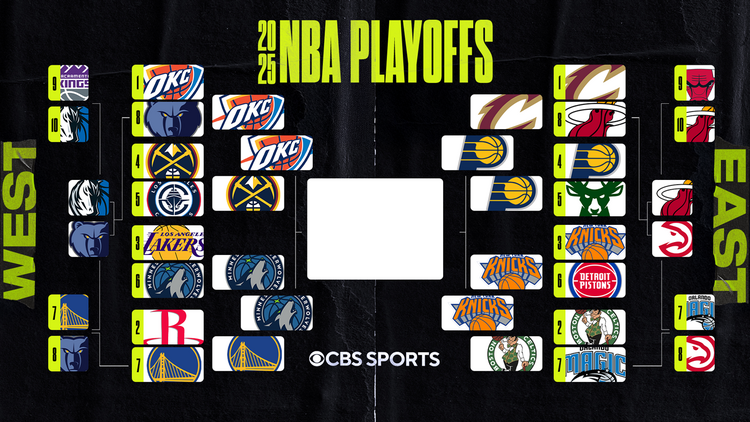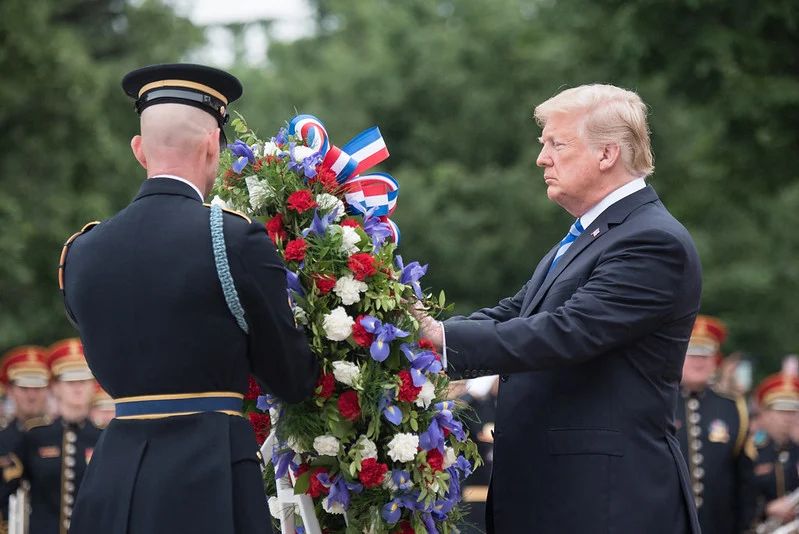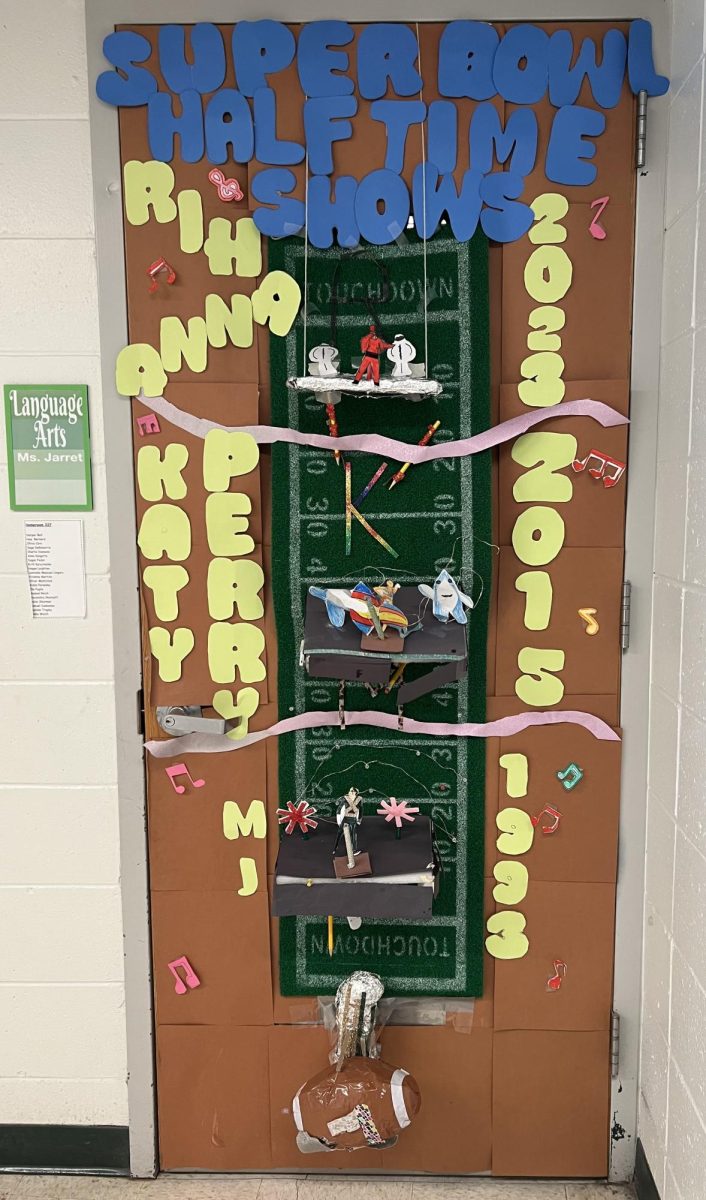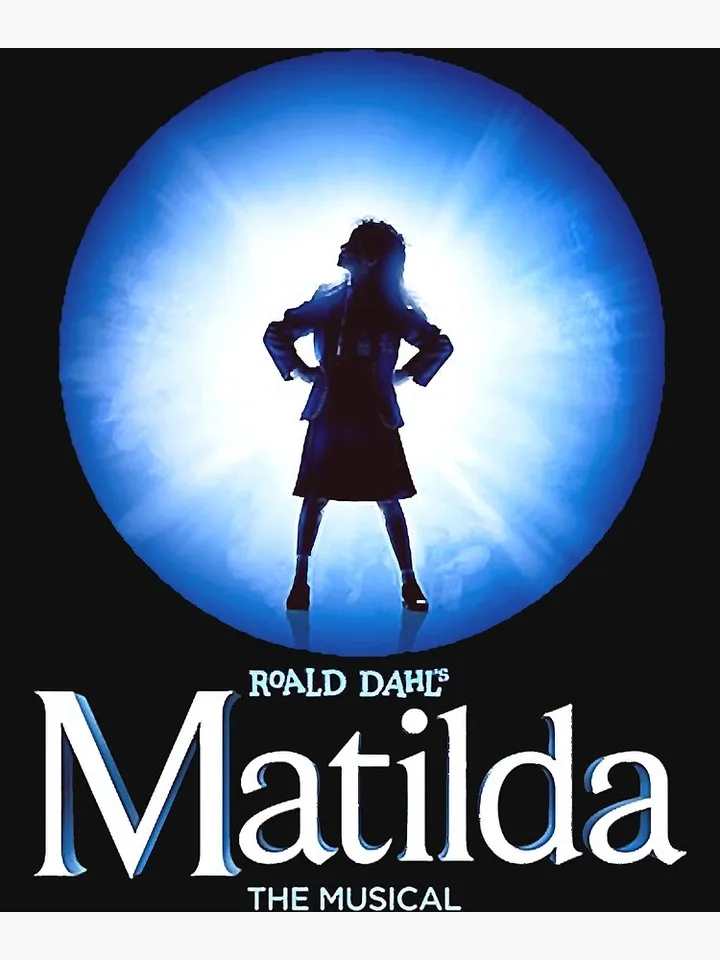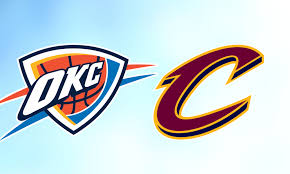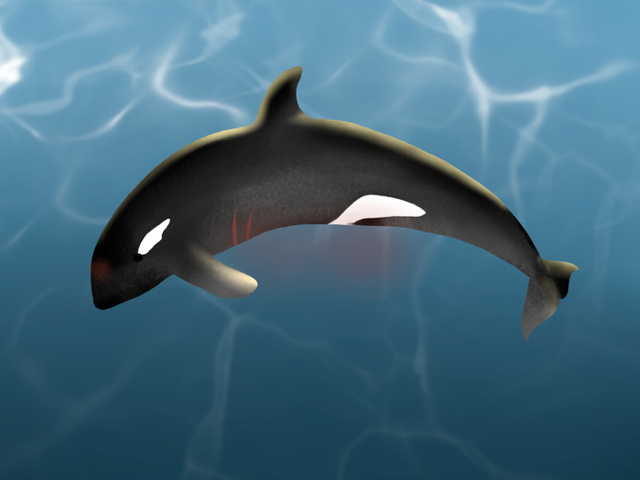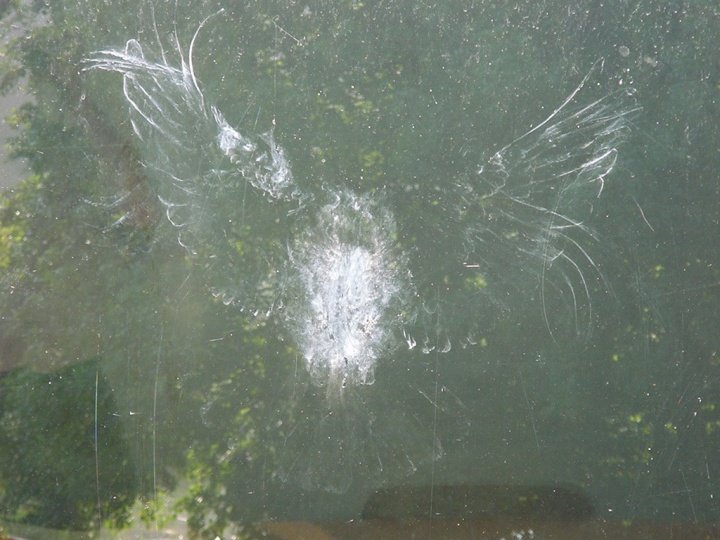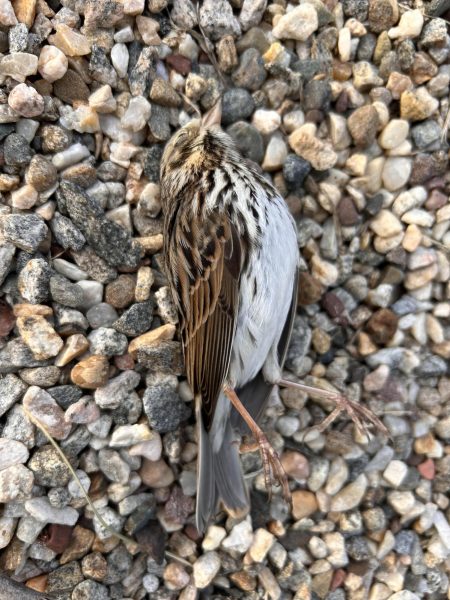
People build tons of new buildings every year. When birds fly south for the winter, they don’t always know that the buildings are there. Even if they do, the reflection in the windows looks like the sky to them. When that happens, they tend to hit those windows. That is called a window strike or bird strike. Mrs. Fasciolo from the 6th grade Dolphin team is an avid bird-watcher, and she has found 3 birds that crashed into the front windows this school year alone. Earlier in the school year, she found a Barred Owl that she couldn’t save. Then, she found a Virginia Rail that she thankfully saved and brought it to a wildlife sanctuary. Just a few weeks ago she found a Savannah Sparrow (pictured left) that was already dead while on a nature walk with Eco-Squad. Eco-Squad is a club that meets on Thursday mornings led by Mrs. Fasciolo and Mrs. Ferreri, the latter from the Orcas. By then, it was clear that there was something about CMS that caused bird strikes to happen. The only question was why.
Why Are There Window Strikes?
Once it was figured out that there were a bunch of window strikes, the next step was figuring out why. Luckily, the answer was very clear. CMS faces north, so any birds flying south would slam right into the school on their way. We also have a lot of windows, and if you ever really look at those windows, they reflect the sky pretty well. Birds also fly, so they have less time to swerve around the building if they notice. In the air, it’s hard to turn last second if a bird is already going fast. Humans can’t even do that, and we have the ground to help us. Birds have virtually no way to end up safe unless they actually notice the school before they crash into it. That is why there have been so many bird strikes at CMS, but it isn’t hopeless. There are things that we could do to help birds instead of harming them.
What Can We Do to Help Prevent Window Strikes?
In order to prevent window strikes, we as a school could do a variety of things. For starters, if we put decals in the windows, the birds would think they were predators and avoid the school. Still, even if we did that, it wouldn’t be guaranteed to work. There are some other buildings that have done way more impactful things than decals. For example, there are multiple colleges that replaced all of their glass windows with bird safe glass so that birds don’t collide. Coleytown doesn’t need to do that, but we should at least try. There are up to a billion birds dying every year because of window strikes, and we shouldn’t contribute any more to that.
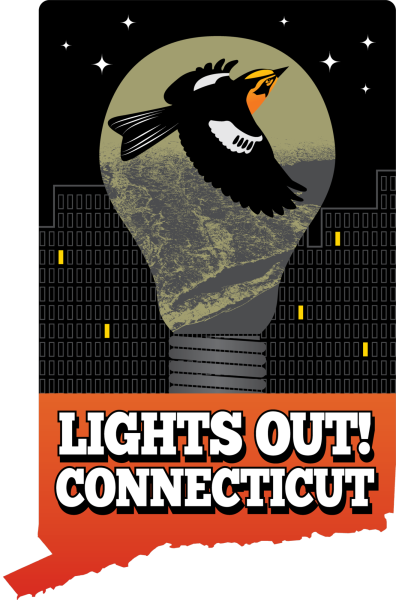
Lights Out Connecticut
Lights Out Connecticut will help prevent this from happening because most bird strikes happen after the sun goes down. This is because the light inside the buildings becomes more reflective of the sky. And because many birds migrate at night using natural light cues like the moon and stars, bright lights and the unnatural light sources, like lampposts, can confuse them, causing some to collide with windows and walls while others circle in confusion until exhaustion overcomes them. That causes more migrating birds to crash, but if we were to turn out our light when it starts to get dark the birds will notice the building and adjust their flight plan to go around the building. From the best current scientific understanding, millions of birds die in the U.S. every year because of this. A landmark study conducted by the Field Museum in Chicago showed that by turning the lights off in one building, the number of birds killed there dropped by over 80 percent. Fortunately, a simple thing like turning out lights can help birds navigate our environment and protect them from unnecessary harm. Lights out Connecticut will propose a curfew-like policy that describes rules for how many lights you should have on at 10:00 pm and later. You could also participate in this on your own terms and help these birds in many other ways without Lights out, for example you could put stickers on the outside of your windows to tell birds that it’s a solid object. Please help protect these birds.
Sources:
“Wildlife Rehabilitation.” Bird Alliance of Oregon, 2025, birdallianceoregon.org/
our-work/rehabilitate-wildlife/.
Cox, Sophie. “We Are Killing Birds. Solutions Exist. Research Can Help.” Duke
Research Blog, Duke University, 11 Apr. 2024, researchblog.duke.edu/2024/04/
11/we-are-killing-birds-solutions-exist-research-can-help/. Accessed 14
Jan. 2025.
Mrs. Fasciolo (6th Grade Dolphins Math)
